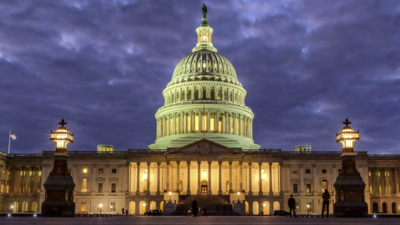
Donald Trump‘s Republicans held on to a narrow edge on Friday as election officials tallied the final votes that will determine control of the US House of Representativesthough Democrats succeeded in flipping a pair of New York state seats.
Republicans have secured at least 211 seats, seven short of the majority in the 435-member chamber, with 24 races left to be called, according to projections by Edison Research.
Republicans are also set to hold a majority in Senate. Several media outlets projected that Republican Dave McCormick would defeat Democratic Senator Bob Casey in Pennsylvania, giving Trump’s party 53 seats in the 100-seat chamber. That margin could climb as high as 55 seats if Republicans win close races in Arizona and Nevada, which remain uncalled.
Full congressional control by Republicans would give Trump great leeway to pursue policies including sweeping tax cuts, energy deregulation and border security controls. Should Democrats succeed in capturing a majority in the House which would require them to win 18 of the 24 as-yet uncalled seats, it would give them a bulwark to push back against him. Democrats’ hopes of capturing the House run through parts of California and New York, where challengers overnight succeeded in flipping two Republican seats. Counting of ballots in California, Arizona and some other states was still underway 3 days after Election Day.
Republicans’ majority in the Senate will allow them to confirm Trump’s appointments of cabinet members, judges and other personnel, though they will not have the 60 votes needed to quickly pass most legislation. Even with Republican control of both chambers, there may be limits to what Trump can do in Congress. Some Republican senators could balk at his nominations for cabinet posts. And legislation in the Senate would still require some Democratic cooperation to avoid a filibuster.



















